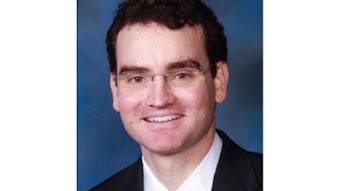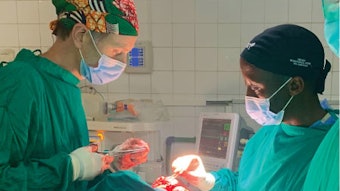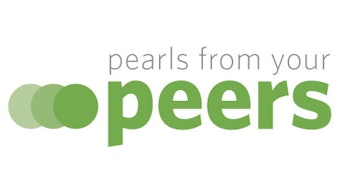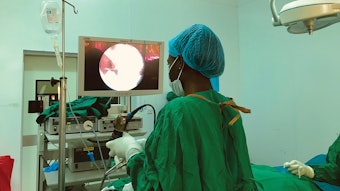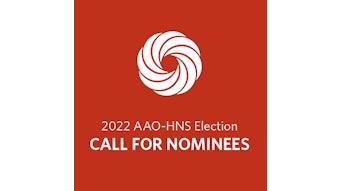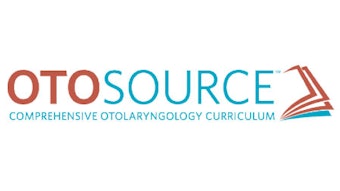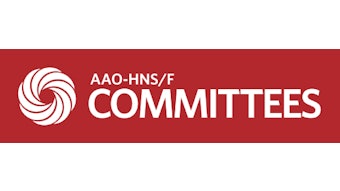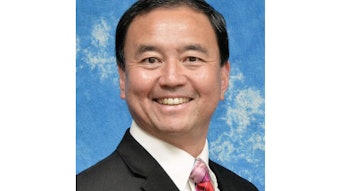Planning for the Future of Meetings in Significant Ways
I write this column after returning from our in-person 125th Anniversary Annual Meeting & OTO Experience held in Los Angeles, California, October 3-6.
 James C. Denneny III, MD
James C. Denneny III, MD
AAO-HNS/F EVP/CEO
The relief of being able to safely hold our 125th Anniversary meeting, which stemmed from the decision we made to replace Chicago, Illinois, with Los Angeles. This ultimately allowed us to hold this meeting in person, which would not have been possible in Chicago and was followed by the satisfaction and joy of seeing the attendees’ response to the exceptional program. Despite the frustration caused by the fluid situation with the COVID-19 pandemic, which resulted in travel restrictions both within the United States and the world, the Annual Meeting Program Committee (AMPC) and our staff, led by Daniel C. Chelius, Jr., MD, should be proud of both the in-person and virtual program they presented. I wish they could have all attended and seen the smiles, excitement, and energy displayed by the attendees who came to Los Angeles. There was also an element of sadness for those who expended a great deal of energy and time putting together their presentations, particularly our international guests, and then were ultimately not able to attend and enjoy the camaraderie, fellowship, and renewal of existing friendships that took place on-site.
The following week I participated as an Examiner at the American Board of Otolaryngology - Head and Neck Surgery (ABOHNS) oral Board Certification examinations using a completely virtual format. Conversations with Brian Nussenbaum, MD, ABOHNS Executive Director, confirmed that both organizations were facing similar situations about incorporating virtual technology into previously in-person events. The same question is being posed across all aspects of the meetings industry, not just across the breadth of medical associations where the revenue generated is a significant component of the operating budget.
The currently available technology that allows meaningful virtual participation during live in-person education, governance, and standard committee meetings is extremely expensive and not practical for small regularly scheduled meetings. Unfortunately, attendee preferences with or without COVID-19 considerations, vary widely depending on their stakeholder group. The evolution of these meetings will be one of the most critical decisions for most organizations over the next three to five years. Creating a balance between convenience, effectiveness, and value, particularly in volunteer-based nonprofit entities such as the AAO-HNS, that is inclusive to the appropriate stakeholders will be one of the most important factors in the perceived utility of the organization and a primary determinant in the ability to represent the interests and needs of its constituency.
The Task Force on the Future of Meetings held its first meeting prior to our recent 125th Anniversary Annual Meeting in Los Angeles and its second meeting the following week. It was very informative to hear the difference in the tone of the Task Force’s discussion after the meeting. The vast majority of the members of the Task Force attended the meeting in-person. We held the first in-person Board of Directors meeting since our Annual Meeting in New Orleans, Louisiana, in September 2019, and even though the previous five meetings that were held virtually successfully accomplished the business at hand, there was a palpable energy in the room and noticeable increased discussion and interaction that is vital to maintaining and growing the culture of leadership and service so prominent in our organization over our past 125 years.
As we evaluate the entire portfolio of meetings that we convene each year, it will be critical to identify “why we are having the meeting,” “what is the goal of the meeting,” and “who are the attendees at the meeting.” Only then can we achieve the balance we seek and match the format being used to achieving the goal of the meeting most completely with the resources available. Since we are likely to be dealing with some level of COVID-19 infection well into the future, we will need to maintain flexibility and practice patience as we find the best way to maintain the significant benefit of the meetings while considering stakeholder concerns and value.

